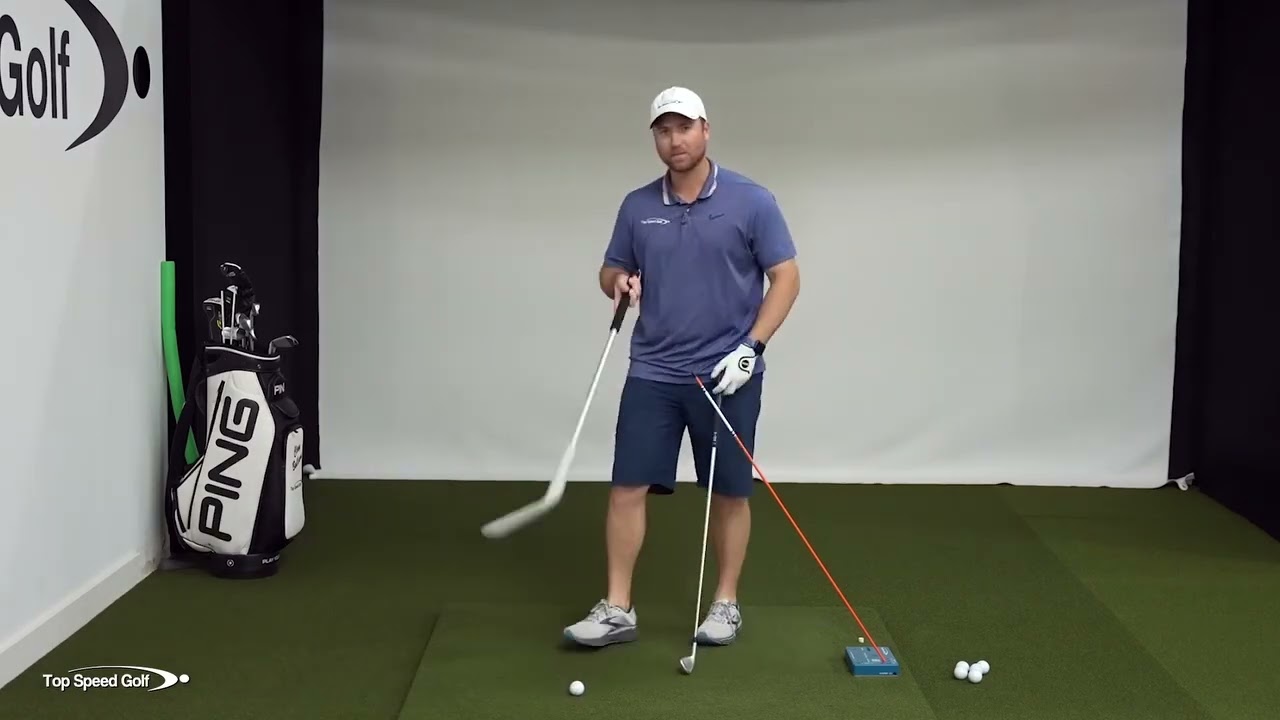 Achieve pro-like compression and sound when hitting the ball with our step-by-step guide. Green up your golfing skills by mastering the techniques taught by Top Speed Golf’s Clay Ballard. Follow the instructions, and you’ll learn to stay in posture, compress the ball, and sound just like the pros.
Achieve pro-like compression and sound when hitting the ball with our step-by-step guide. Green up your golfing skills by mastering the techniques taught by Top Speed Golf’s Clay Ballard. Follow the instructions, and you’ll learn to stay in posture, compress the ball, and sound just like the pros.
Table of Contents
- Step 1: Understand The Problem – Why Posture Kills Good Contact
- Step 2: Set Up The Brick And Stick Drill For Immediate Feedback
- Step 3: Learn The Correct Feeling – Hips Back And Hands Close
- Step 4: Recognize How Shaft Lean And Sole Angle Affect Contact
- Step 5: Stay Behind The Ball – Don’t Slide Forward
- Step 6: Add Forward Hand Position (Shaft Lean) So The Club Glides Instead Of Digs
- Step 7: Drill Sequence – Practice The Blue Brick Routine
- Step 8: What To Expect – Improvements And How Fast You’ll See Them
- Step 9: Common Mistakes And How To Avoid Them
- Step 10: Transfer To The Course – How To Use This Under Pressure
- Frequently Asked Questions (FAQ)
- Conclusion – Compress Like A Pro By Staying In Posture
Step 1: Understand The Problem – Why Posture Kills Good Contact
Many golfers experience the same insidious issue: they get steep on the downswing, lose their posture, and thereby lose their ability to compress the ball. This error leads to thin or chunked shots with vertical shafts at impact, depriving you of the crisp, clear strikes of a professional.
- Thin shots or chunk shots can indicate a posture issue.
- Vertical shafts don’t guarantee good contact; posture plays a critical role.
- Adjusting the club’s lie won’t address the real issue of a vertical swing plane.
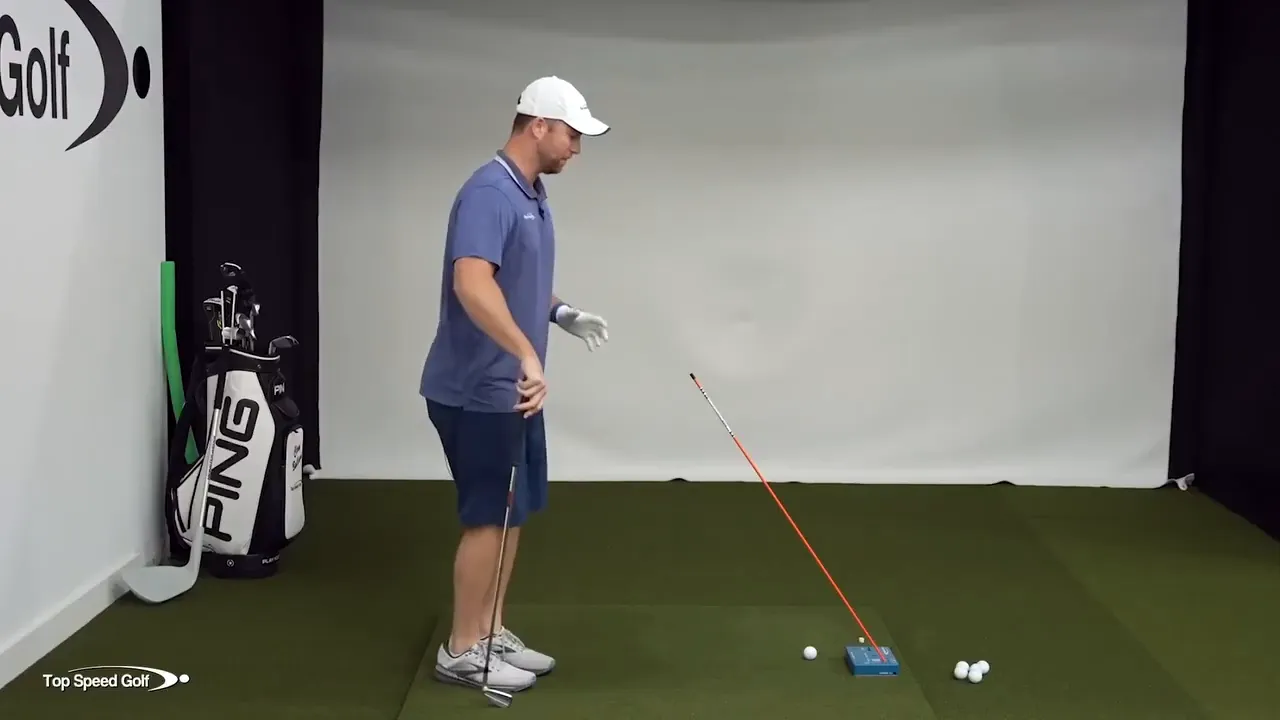
Step 2: Set Up The Brick And Stick Drill For Immediate Feedback
This drill accelerates your improvement by using a blue brick and alignment stick to provide instant feedback on your posture and club position.
- Position the brick where your iron typically makes a divot.
- Insert the alignment stick into the brick, parallel to your swing path.
- Set the golf ball in front of the brick, a clubhead width back from the stick.
Practice swings should avoid the stick, ensuring proper hand and arm positioning without “popping up.”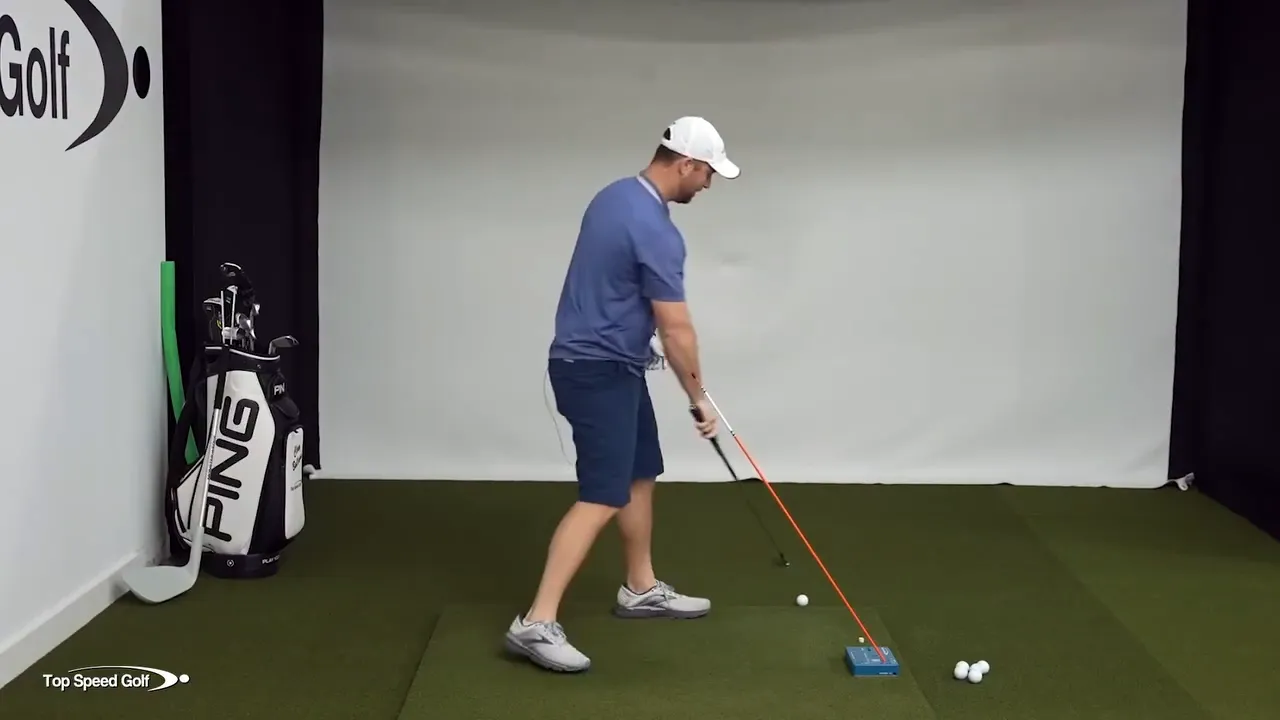
Step 3: Learn The Correct Feeling – Hips Back And Hands Close
The right movement is not about sliding but creating space between your body and the club. This space is made by moving your hips slightly backward during the downswing.
- Push hips back to create space.
- Keep hands and forearms close to your thighs.
- Lower your chest without raising your nose, maintaining posture and spacing.
Step 4: Recognize How Shaft Lean And Sole Angle Affect Contact
Proper shaft lean and sole angle create solid contact and consistent ball striking:
- A flat sole at impact yields solid compression and a square divot.
- Vertical shaft leads to thin shots, especially on tight lies.
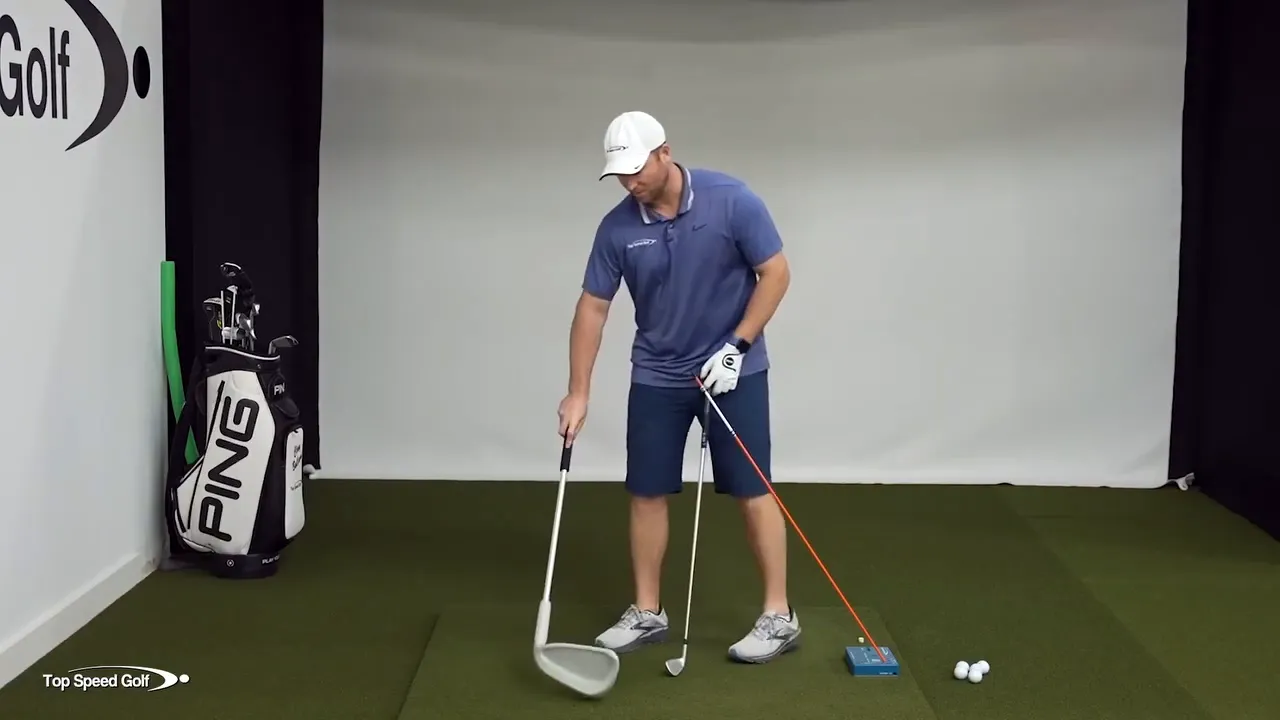
Step 5: Stay Behind The Ball – Don’t Slide Forward
Proper positioning leads to better impact:
- Keep your chin and nose slightly behind the ball at impact.
- Maintain a stable, rotating body, avoiding lateral slides.
This setup encourages a shallower club approach and optimizes compression.
Step 6: Add Forward Hand Position (Shaft Lean) So The Club Glides Instead Of Digs
The “keep your hands forward” approach stops digging and promotes smooth turf interaction:
- Combine “staying down” with forward hand position for better glide.
- Adjust shaft lean according to the club, ensuring proper hand positioning through impact.
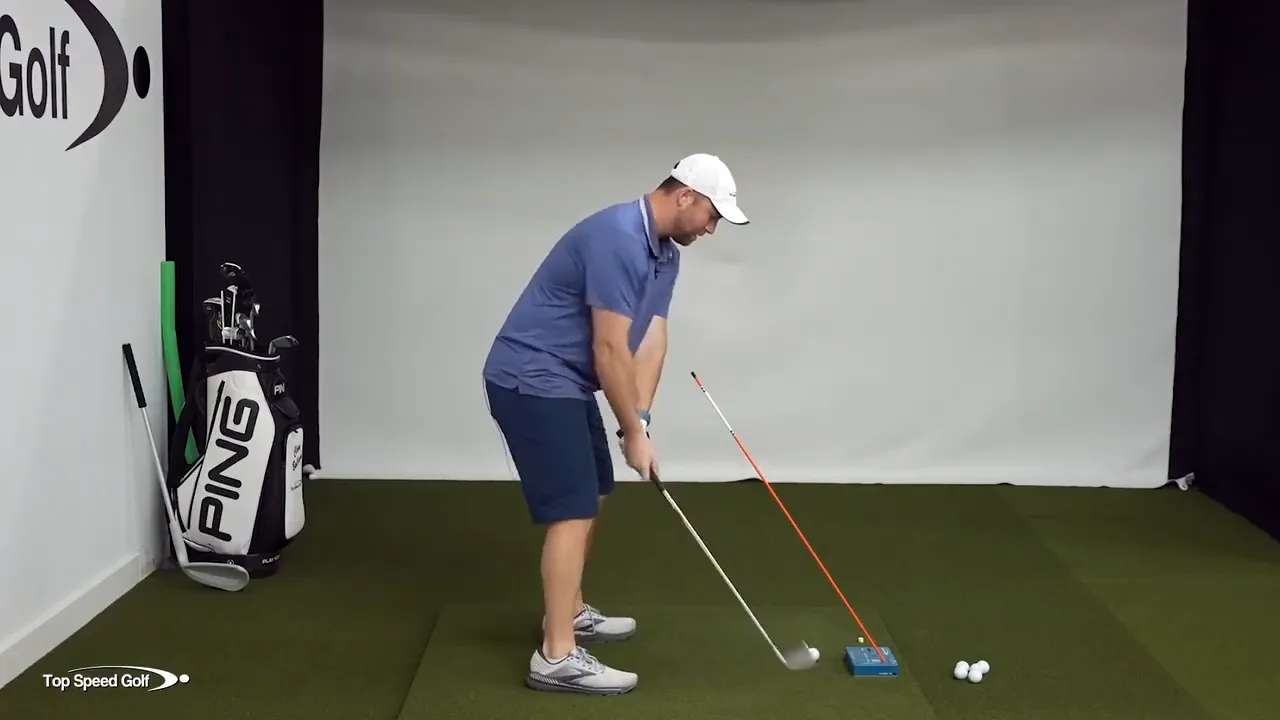
Step 7: Drill Sequence – Practice The Blue Brick Routine
Follow this structured practice sequence to integrate the drill into your regular training:
- Warm up with target-less, slow swings to feel hip movement and hand placement.
- Use the brick setup and practice half-swings, avoiding the stick.
- Progress to three-quarter swings, ensuring proper shaft lean.
- Remove the brick and repeat with a focus on previous sensations.
Step 8: What To Expect – Improvements And How Fast You’ll See Them
Rapid improvements come with focused practice:
- Session 1: Increased awareness of posture and notable improvement in strikes.
- Session 2–4: Reliable good contact and refined release control.
- Long-term: Better scores with dependable ball flight consistency.
Step 9: Common Mistakes And How To Avoid Them
Even with this routine, golfers can fall into traps:
- Standing Up During Swing: Exaggerate “hips back” for better form retention.
- Chunking or Casting: Focus on forward hand position to refine impact execution.
- Lateral Hip Movement: Prioritize rotation over sliding for better control.
Step 10: Transfer To The Course – How To Use This Under Pressure
Implement your practice on the course by using a pre-shot routine:
- Slightly more weight on your lead foot before the swing.
- Envision hands brushing thighs with forward lean.
- Concentrate on shaft lean at impact.
Transfer these training concepts to real-game situations to maintain your form.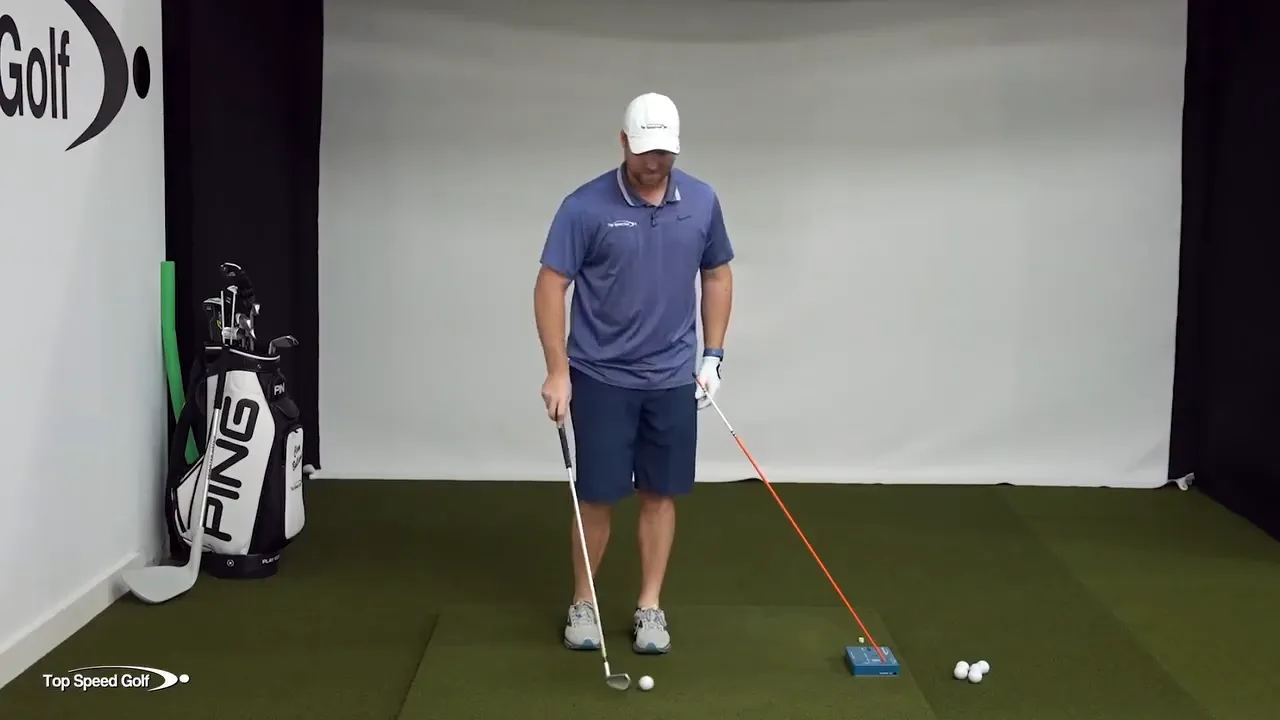
Why Not Just Change Club Lie Angles?
Simply adjusting club lie angles may not provide a comprehensive solution. While this change can offer minor tweaks, mastering swing fundamentals provides more significant and lasting results.
Frequently Asked Questions (FAQ)
Q: How often should I practice the brick-and-stick drill?
A: Frequent, short sessions of 10–20 minutes, two to three times a week are most effective.
Q: Do I need a blue brick or can I use something else?
A: A flat block with an alignment stick works as a great substitute, provided it offers clear feedback.
Q: Will this drill work with every club, including driver?
A: Yes, the principals transfer across all clubs, though specifics might vary slightly with drivers.
Q: What if I still chunk shots after doing the drill?
A: Focus once again on your forward hand position at impact and avoid casting.
Q: Can instant feedback from the stick injure my arms?
A: Using the blunt end of an alignment stick should offer safe, sensory feedback.
Q: How will I know I’m getting better?
A: Improved sound at impact and consistent divot formation indicate progress.
Conclusion – Compress Like A Pro By Staying In Posture
Mastering golf compression through posture control leads to pronounced improvements in your game. Use the brick-and-stick method for consistent results and watch as your swing transforms, delivering the clean, unmistakable sound of professional contact.
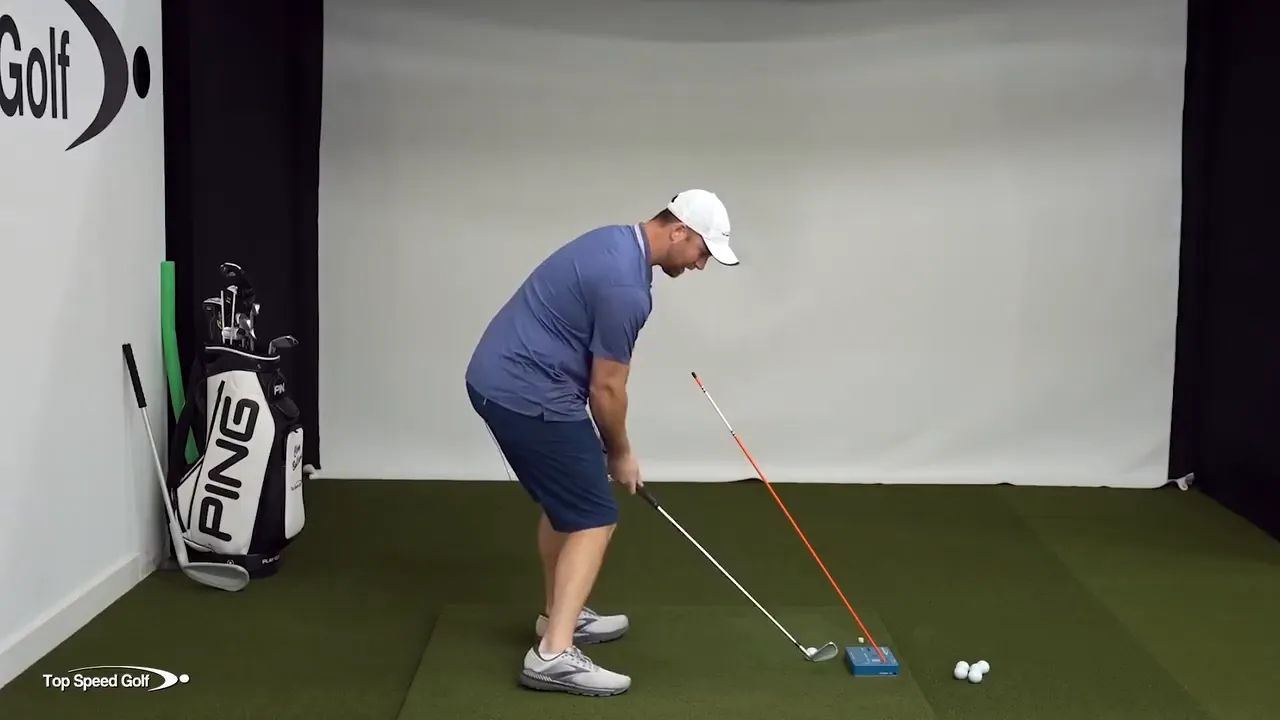

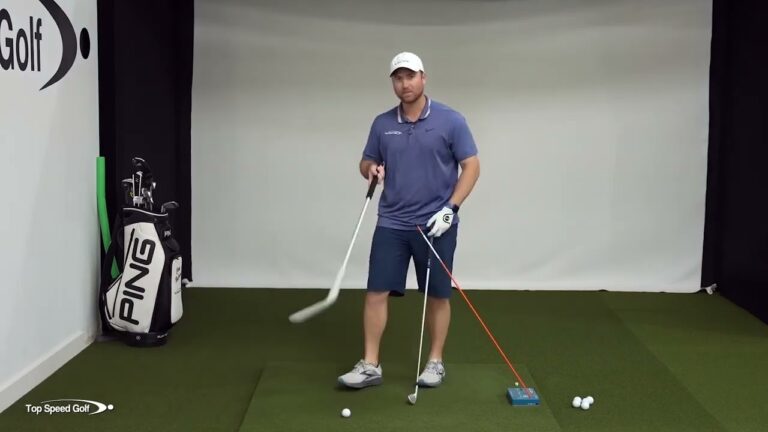
0 Comments